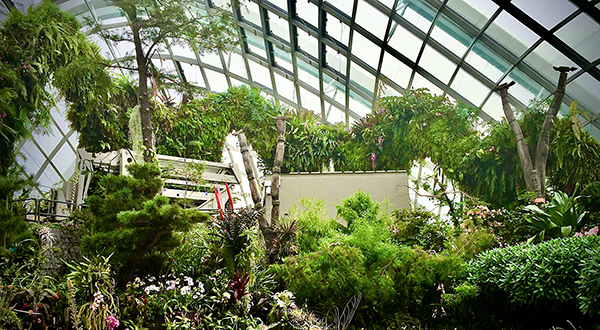July 22nd, 2022Glen, about the house
‘Babble on’ Hanging Gardens
Old King Nebuchadnezzar II and his Babylonians certainly started something when they draped their multi-tiered citadels with lush greenery. They would, no doubt, have found success with quite a few plant species that would have barely survived out in the harsh desert below. For a start, they would certainly have faced less trouble with water supplies and maintenance of soil quality.
If you can be tempted to share in the pleasures of a hanging garden you won’t be desperate for garden space either nor do you necessarily need the expense of a greenhouse, unless you feel the urge to try your hand with a few exotics.
Hanging plants will take up precious little space in fact the bargain will be an added layer to your garden. Even then, your hanging plantings need not be restricted to suspended baskets or pots.
Although spectacular with their long pendulous trails of foliage and flowers, an even more spectacular effect can be obtained by draping container-borne pendulous plants over ledges, steps and shelves. Many plant species will thrive in small airborne containers, there are many more that require greater quantities of root space, so your range of suitable plants is wider than first thought.
For seasonal colour spectacles nothing can look better than hanging baskets or pots of cascading flowering annuals such as petunias, trailing lobelia or other similar plants, but only if you are prepared to spend the time, replanting at the end of each season.
I’m getting a little lazy in my old age so, after too many years of establishing too many gardens, I’m quite content to enjoy the pleasure of watching and tending the more permanent ferns, succulents etc.
Hanging baskets & pots
Always choose the largest basket you can find (up to 40cm), to allow for maximum amount of soil mix to allow for plenty of root growth and water. It will mean it will also be heavy, so you will need fairly strong supports. You should also set up some sort of watering system to avoid having to constantly move them. A simple black polypipe with tiny drippers would suit fine.
Hanging plant baskets come in many varieties and include wrought iron types, generally with open wire mesh sides. Whichever you choose, the basket will need to be lined before filling with soil. The traditional method was to first line the walls with hessian, or these days, shadecloth, and then, pack a layer of moistened sphagnum moss, coconut fibre or recycled wool. Alternatively you can purchase a pre-made fibre liner.
Your plants will grow best in specifically potting grade mix, or a home-made mix of well-rotted compost, sand and crumbly loam. A thin layer of composted autumn leaves or peatmoss will assist in keeping the soil moist. Remember, the basket sides are still very porous and subject to evaporation via the wind and, if open to sunlight and heat. If you aren’t too sure about using baskets, there are plenty of suitable plastic pots readily available at hardware and garden outlets.
If, like me, you would prefer to take the permanent option, there are copious evergreen and deciduous trailing plants to select from as well as the beautifully appropriate ferns, ivies and orchids.
Much the same applies to the sundry planter box and pot-grown trailing and weeping shrubs and weeping trees that can be situated on outdoor stairways and decks to complement your “hanging garden”.
I’ll cover that when I suggest some choice plants when we next meet in issue 259.










